Winter riding can put extra wear and tear on your bike due to increased exposure to water, grit and even salt depending on where you live.
For this reason, many people hang up their precious road bike at the end of summer and pick up a winter bike.
In this guide, we’ll discuss some different approaches to choosing a bike for winter road riding, and which components and accessories matter the most.
BikeRadar’s experts have an immense combined experience of winter riding and have reviewed hundreds of winter road bikes over the years.
Whether you're looking to buy a whole new bike, revive an old one or adapt your current machine, this is the guide for you.
Although our pick of the road bikes we've tested for winter riding aren't all billed as winter bikes and some do not come with mudguards, all have the mounting points to enable you to add them retrospectively.
Our buyer's guide at the bottom of this article highlights what to look out for in a winter bike and the different approaches you might take to set yourself up for winter riding.
Editor's note: This list was updated on 15 November 2024 with our latest winter road bike reviews. We have also shared guidance on how we test winter road bikes and why you can trust BikeRadar.
Best road bikes for winter as rated by our testers
SQUIRREL_PLAYLIST_10144243
Ribble Endurance Ti Disc
SQUIRREL_TEXT_13080373

- £3,299 / $4,568 / €3,843 as tested
- Pros: Quality, corrosion-proof titanium frameset; good component spec for all-weather riding
- Cons: Mudguards could shield you better
Ribble’s titanium mile muncher has discreet mudguard mounts, enabling you to spec guards via Ribble’s Bike Builder. It’s really well finished and the full internal cable routing makes for easier cleaning.
We liked the slightly racy ride position and the backsweep of the Level bars, as well as the well-built wheels and wide Continental Grand Prix GT tyres. The Ultegra groupset is an asset too.
The Endurance Ti Disc handles poor surfaces well and is built to last, whatever the weather. The flaps on Ribble’s mudguards are a little short to keep your shoes clean though.
SQUIRREL_13080373
Specialized Roubaix SL8 Sport 105
SQUIRREL_TEXT_13079792

- £3,000 / $3,500 / €3,800 / AU$5,400 as tested
- Pros: Future Shock suspension works well; all-surface comfort; fast
- Cons: Basic wheels
The Roubaix SL8 Sport 105 offers supreme comfort on all types of terrain, even offering up all-road riding ability.
Its Future Shock suspension works well to iron out the road without sapping speed and reduces fatigue on longer rides on rough roads.
The only drawback is lacklustre spec, with the bike coming with quite basic wheels.
SQUIRREL_13079792
Triban RC520 Disc
SQUIRREL_TEXT_13153274
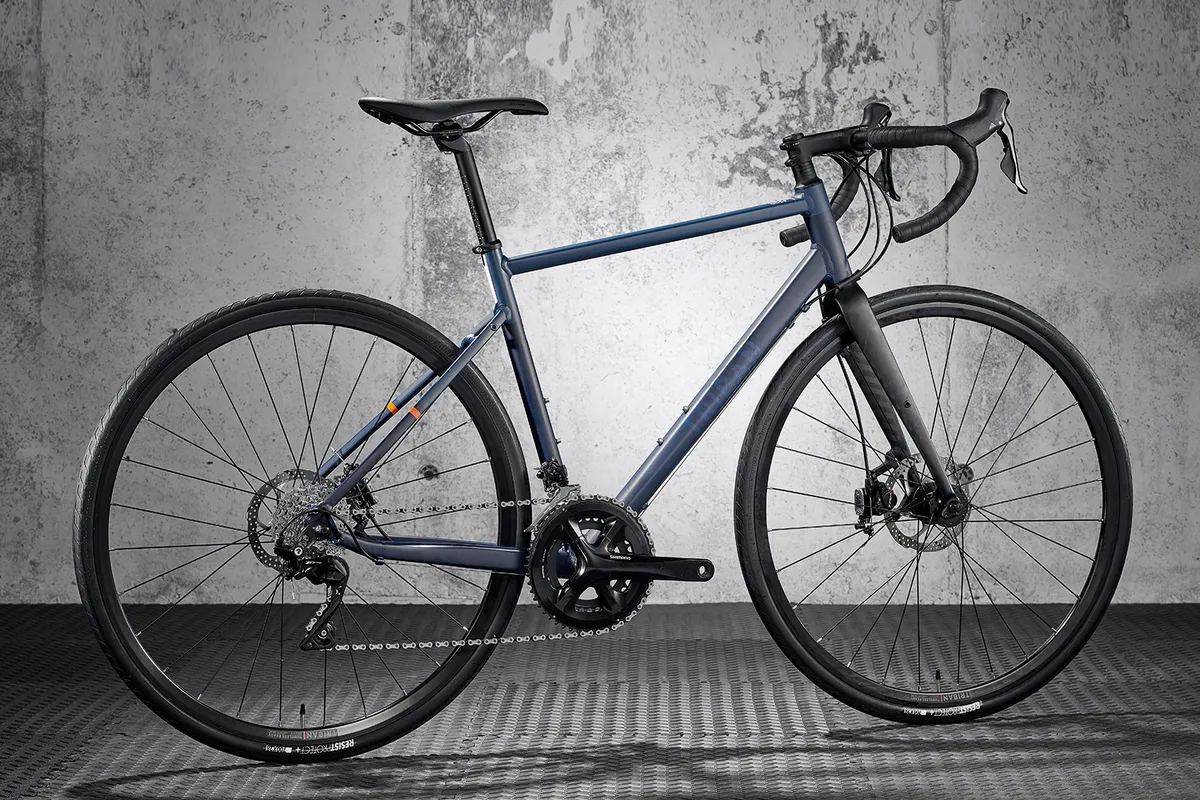
- £850 / $1,400 / €850 as tested
- Pros: High spec for the price with Shimano 105 and TRP disc brakes; tyre clearance up to 36mm without mudguards
- Cons: On the heavy side
The Triban RC520 Disc, sold by Decathlon, offers a great spec for your cash. It doesn't come fitted with mudguards, but there are mounting points on the alloy frame, and carbon fork legs and plenty of clearance around the 28mm tyres, which are mounted on tubeless-ready rims.
It has an 11-speed Shimano 105 groupset with an 11-32t Microshift cassette, so you're not losing gear ratios on your winter rides, while the TRP HY/RD disc brakes combine cable operation with hydraulic actuation of the calipers.
We've also tested the Triban RC500 with the same frame but equipped with 9-speed Shimano Sora, which shaves £200 off the price tag.
SQUIRREL_13153274
Boardman ADV 8.6
SQUIRREL_TEXT_13101377
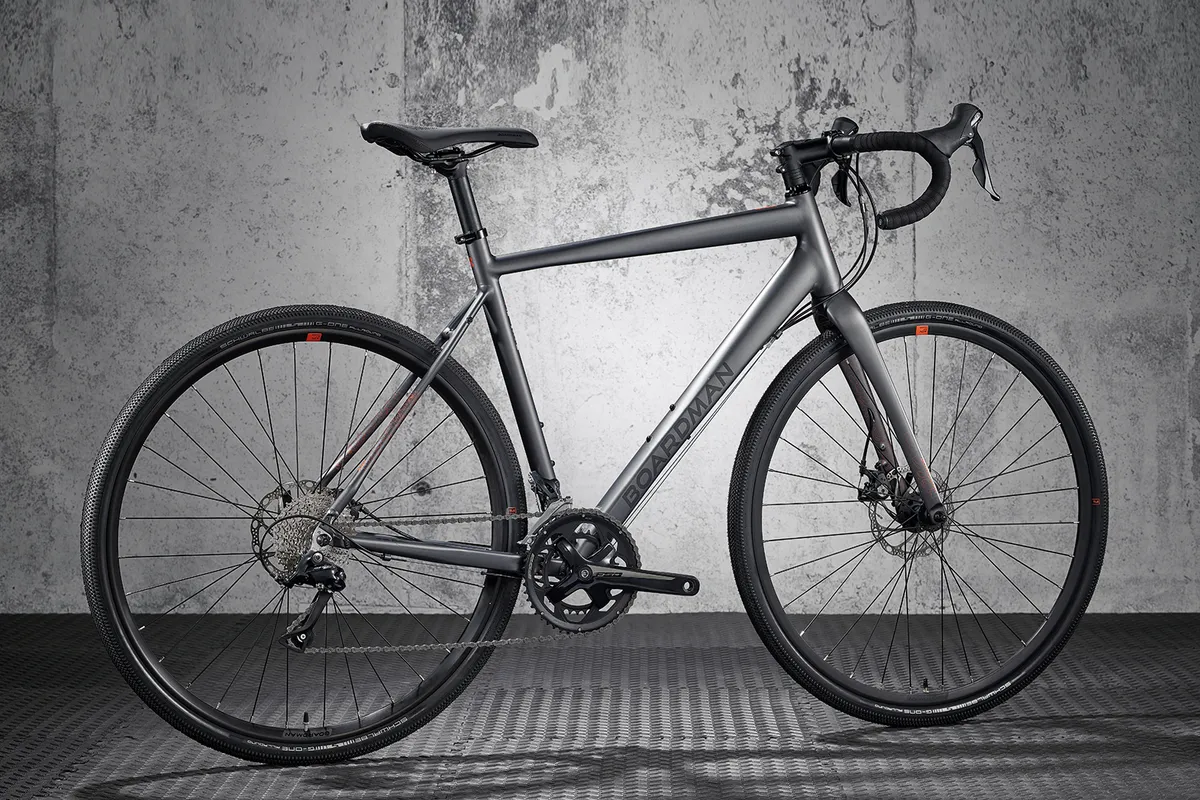
- £750 as tested
- Pros: Tough build with good spec and plenty of versatility; rolls well on-road as well as off
- Cons: Mechanical calipers aren't the best
It's part of Boardman's gravel-oriented ADV range, but the ADV 8.6 has mudguard and rack mounts, making it a competent road option that can also take you off the beaten track. The 38mm tyres fitted roll well on tarmac and offer plenty of grip, as well as being able to keep going off-road.
The ADV 8.6 is tough, comfortable and handles well. We'd just have liked to see more effective disc brakes than the fitted Tektro mechanical calipers.
SQUIRREL_13101377
Cannondale Synapse 1
SQUIRREL_TEXT_13080937
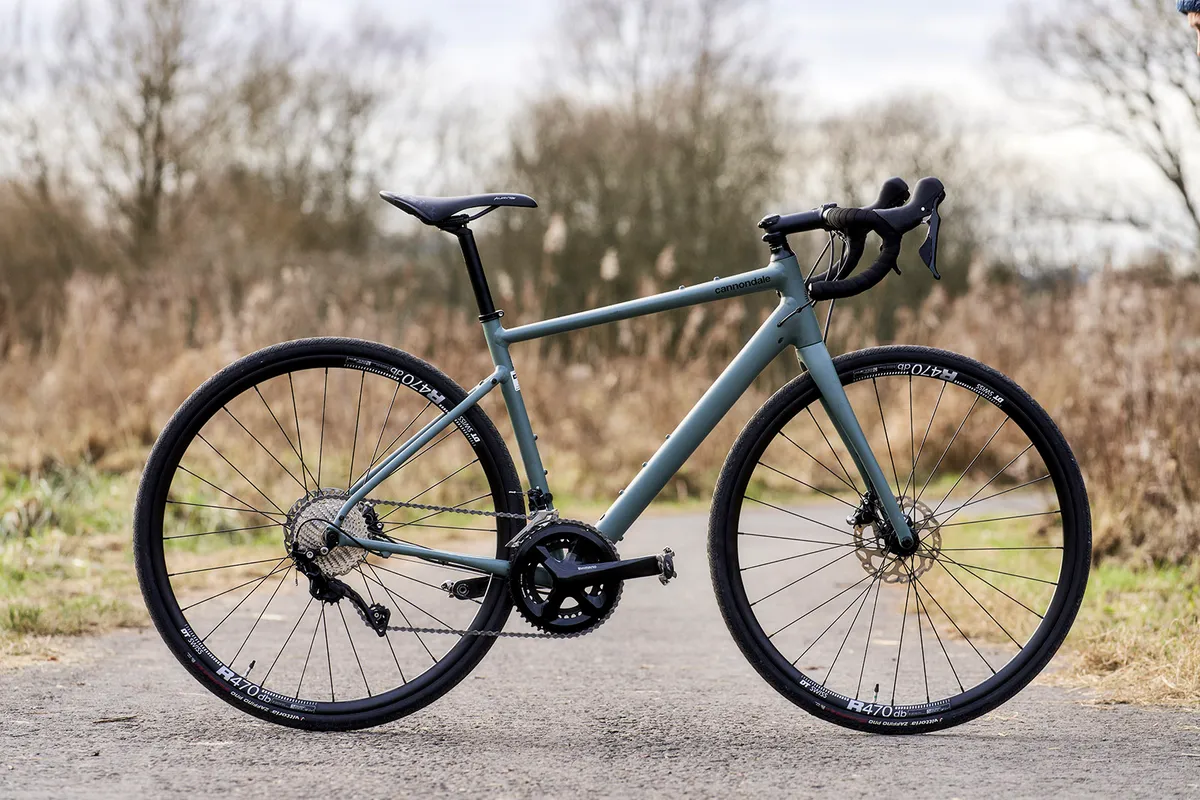
- £1,900 / €1,995 as tested
- Pros: Comfortable position and comprehensive fixtures and fittings; great ride quality; room for wide tyres
- Cons: More expensive than its rivals
The Synapse 1 is Cannondale's top-lined aluminium model that thrives on the road and beyond. We found it to be suitably quick with bucket loads of comfort.
Although Cannondale says there's room for 32mm tyres, it points out there's "6mm room on either side", so you could squeeze in 35mm rubber for a bit of rough-stuff riding without mudguards.
There's most of a Shimano 105 R7020 groupset (with the exception of the non-series crankset and chain) and the stock Vittoria Zaffiro Pro tyres would need to be upgraded if you wanted to run tubeless.
SQUIRREL_13080937
Condor Fratello Disc
SQUIRREL_TEXT_13119078

- £2,500 as tested
- Pros: Steel frame gives a lively ride feel; quality spec; comfortable
- Cons: Mechanical disc brakes aren’t as good as hydraulic discs
Condor has been a fixture of London cycling for over 70 years, so it knows steel frames, with the Fratello made of custom-shaped, triple-butted Columbus Spirit tubing.
With flat-mount disc brakes and 12mm thru-axles, it’s up with modern trends, while the carbon fork has internal routing for the brake hose and for a dynamo lighting cable.
We loved the flowing feel over rough surfaces and the well-balanced ride position. We drooled over the shifting quality of the Campagnolo Centaur groupset too, although the TRP Spyre cable-operated disc brakes don’t quite match up to hydraulic options.
SQUIRREL_TEXT_13119078
Cube Attain SLX
SQUIRREL_TEXT_13080936

- £1,600 / €1,599 / AU$2,499 as tested
- Pros: Fast, lively-feeling frame; room for mudguards; relatively light
- Cons: Limited to 28mm tyres; stock tyres aren't tubeless-ready
Cube claims the Attain SLX strikes "exactly the right blend of pace and comfort" and we'd say it broadly lives up to its billing. If you're after a fairly light, fast and comfortable bike for year-round riding, this bike delivers and then some.
The full-Shimano 105 R7020 groupset is a real highlight, undercutting the competition at this price point.
The only downside of the Attain SLX is that its relatively narrow 28mm tyre clearance means this bike is more at home on tarmac than the rough stuff.
SQUIRREL_13080936
Forme Monyash 2
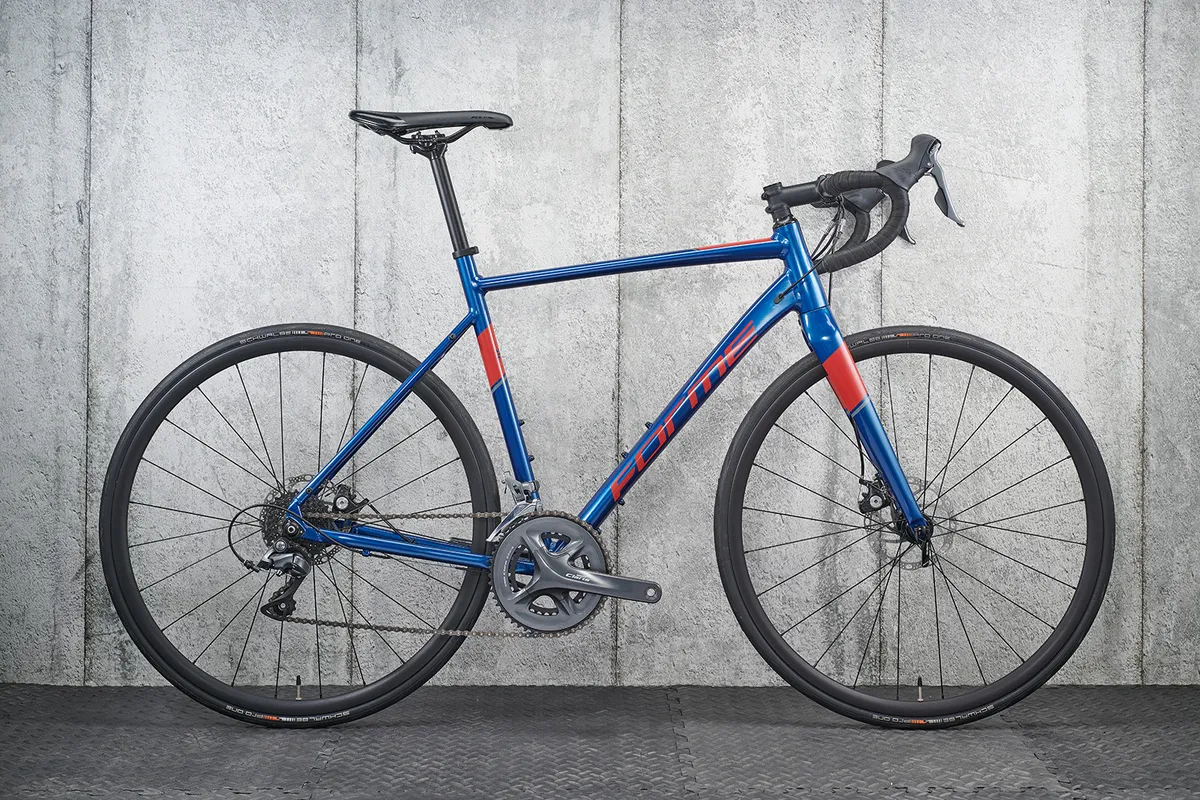
- £1,000 as tested
- Pros: Modern features including thru-axles and internal cabling; quality ride feel; well-priced
- Cons: Not the lightest
We really enjoyed the ride quality of the Forme Monyash 2 and it has clearance to fit mudguards and still take 32mm tyres. The wheels are good quality and come fitted with 26mm Schwalbe tyres, and there are rack mounts and three sets of bottle bosses, making light touring an option.
Spec-wise, the Monyash 2 comes with Shimano Claris 8-speed shifting and Tektro Mira single-piston mechanical disc brakes. They both worked well and there's enough low gearing to handle steeper climbs in the saddle.
Kinesis R2
SQUIRREL_TEXT_13153243
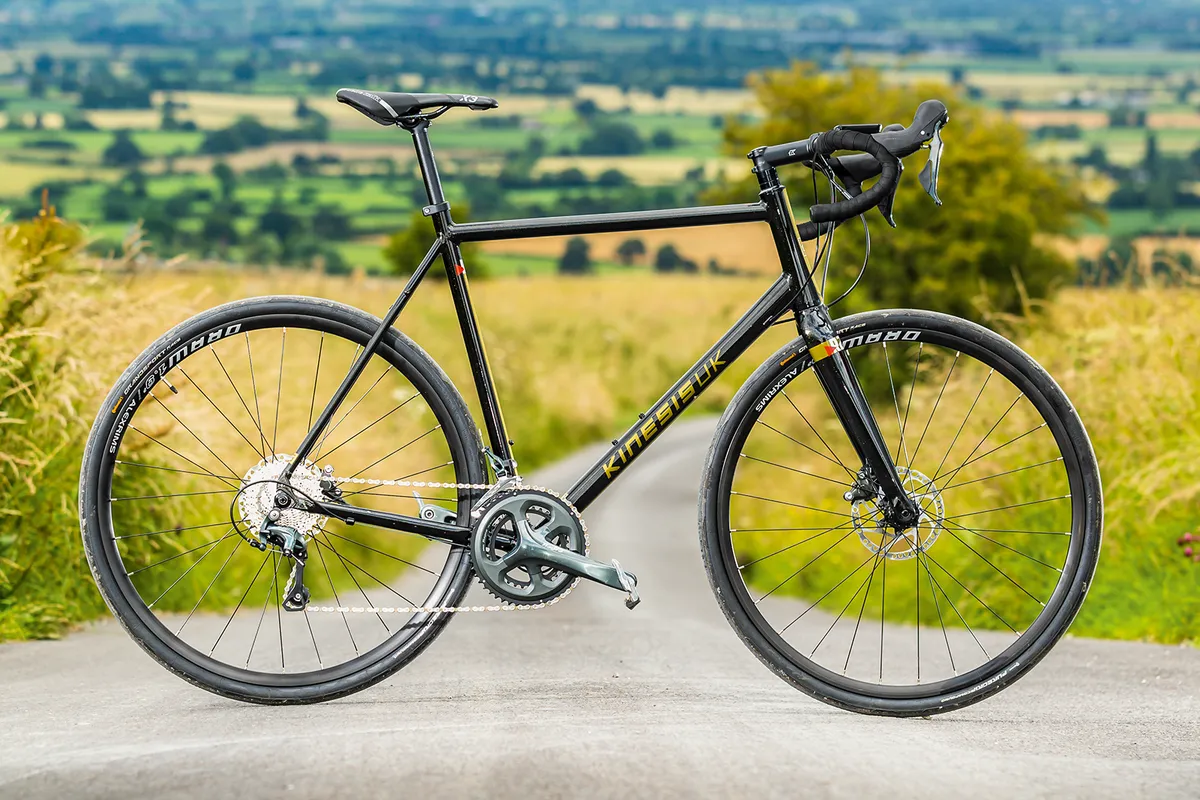
- £1,680 as tested
- Pros: Quality, versatile frame and fork; full Shimano Tiagra groupset including hydraulic disc brakes; well-balanced handling
- Cons: On the heavy side
Designed in the UK, Kinesis bikes are geared to year-round British conditions. The R2 alloy frame comes with mudguard mounts and a full-carbon fork. We reckon it will appeal to those looking for a fast winter trainer, with a geometry that's sportier than many all-rounders.
We tested the 10-speed Tiagra spec, complete with its hydraulic disc brakes and a 1:1 lowest gear. The bike came specced with 32mm Continental Grand Sport Race tyres
SQUIRREL_13153243
Pinnacle Laterite 2
SQUIRREL_TEXT_13153223

- £800 / $1,200 / €960 as tested
- Pros: Low cost; good versatility; great ride characteristics
- Cons: Rim brakes limit upgrades; narrow rims and tyres
The Laterite 2 is well-priced against the competition and, despite its rim brakes, still offers an impressive performance.
Our tester found it to have great balance and plenty of oomph considering its price.
A drawback is the narrow tyres, which make for a harsh ride on lumpy roads, although these can be upgraded easily.
SQUIRREL_13153223
Specialized Allez Sport
SQUIRREL_TEXT_13120224
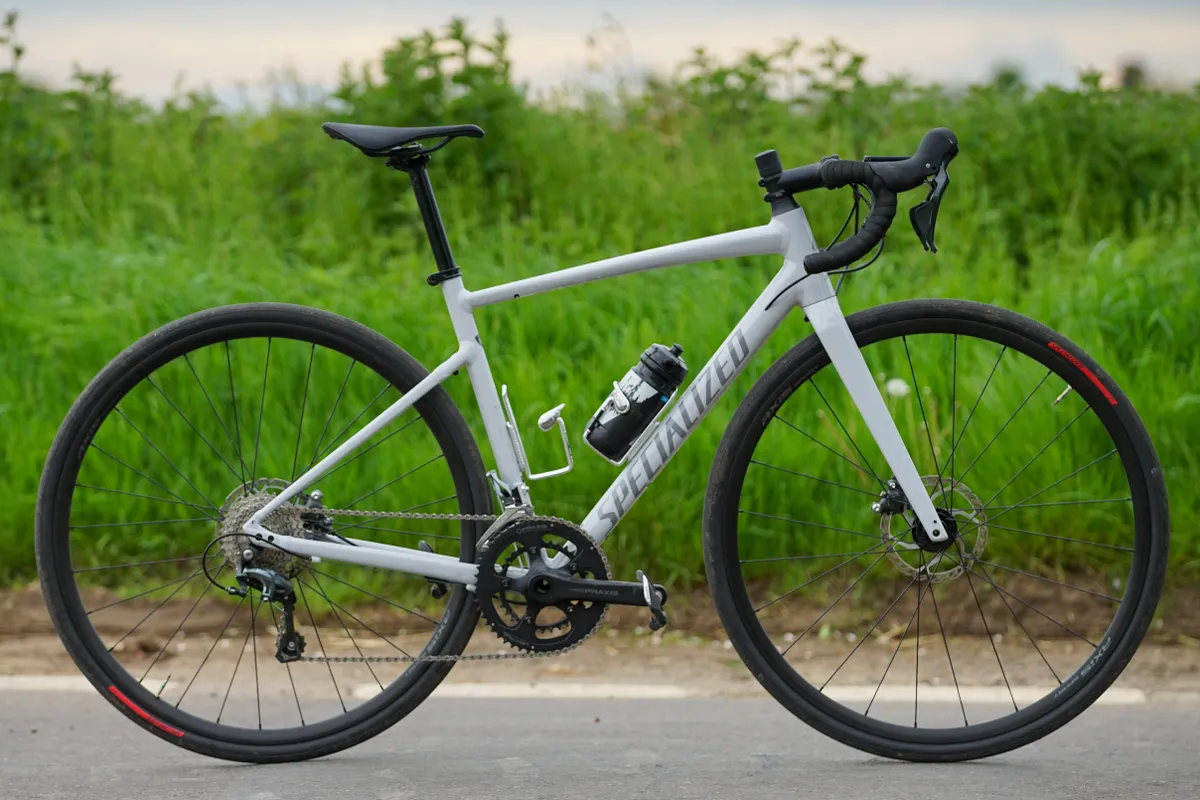
- £1,600 / $1,800 / €1,750 / AU$2,500 as tested
- Pros: An inspired geometry and easy-to-love handling; 35mm tyre clearance; mudguard and rack mounts
- Cons: Wheels not the best
Specialized's latest rendition of the Allez will suit cyclists looking for a slightly more relaxed ride with its composed handling and respectable weight for the money. The Allez Sport impressed us in pretty much every situation, with plenty of stiffness without being harsh. The bike feels stable at speed, while remaining reactive when asked to flick through a corner.
The only downsides to the build are the uninspiring wheels and lifeless tyres, but they can be upgraded down the line.
SQUIRREL_TEXT_13120224
How we test winter road bikes
We test winter road bikes out on the roads to see how they perform in their natural habitat.
Our testers head out in all conditions and ride a variety of terrain over a prolonged period to identify all their strengths and weakness.
Ultimately, our winter road bike reviews are based on the following criteria:
- Handling characteristics – their suitability for typical riding in winter months.
- Specification – how well the components work, are they well-considered? Our in-house mechanic also performs an initial assessment of each test bike to help filter out any issues and design flaws.
- Value versus the competition – for the specification and ride experience, are you getting a good deal for your money compared to the market?
- Standard kit – does the bike come with all the accessories you need for riding in winter, such as mudguards as standard?
Why you can trust BikeRadar
BikeRadar has been an authority on bikes and cycling tech since its inception in 2007, delivering the world’s best riding advice.
We have experts testing all types of bikes, parts, clothing and accessories, from road, mountain and gravel bikes to commuting, bikepacking and electric bikes.
Our reviews are always editorially independent – with no exceptions. Our reviewers comprehensively test all products in the real world, always reflecting on performance, value and the wider market when delivering their verdicts and review ratings.
We have more than 15,000 product reviews available at your fingertips, as well as expert buying, maintenance, training, skills, health and fitness advice.
Our annual Bike of the Year test is an industry benchmark and the BikeRadar team consists of some of the most experienced riders and testers in the business.
Buyer's guide to winter road bikes
There are a number of approaches to getting a bike that's equipped for winter conditions. Which works for you will depend on your resources and how keen you are to continue your riding into poorer conditions.
The premium option: a dedicated, purpose-built road bike

The ideal image of a winter road bike is one built from the ground up with poor-weather riding in mind.
For many years, the archetypal winter bike was a cheap aluminium-framed road bike with a low- to mid-range groupset, skinny tyres, rim brakes and full-length mudguards.
These were sturdy, unpretentious machines that made up for their lack of glamour by being incredibly cheap and very functional.
This breed of machine has all but disappeared in an age of disc brakes and big tyre clearances, but the principle remains valid.
The 2-in-1: a gravel bike

It’s well worth considering a gravel bike for winter because these often have useful mounts for mudguards and accessories, and can adapt to both road riding and rougher stuff with minor spec adjustments.
The line between gravel bikes and fatter-tyred endurance bikes is very blurry in any case, with the differences sometimes more about spec than the underlying frame.
There's also considerable overlap with more traditional touring bikes and it's worth considering one of these, particularly if you're interested in carrying lots of stuff.
The budget approach: an old hack
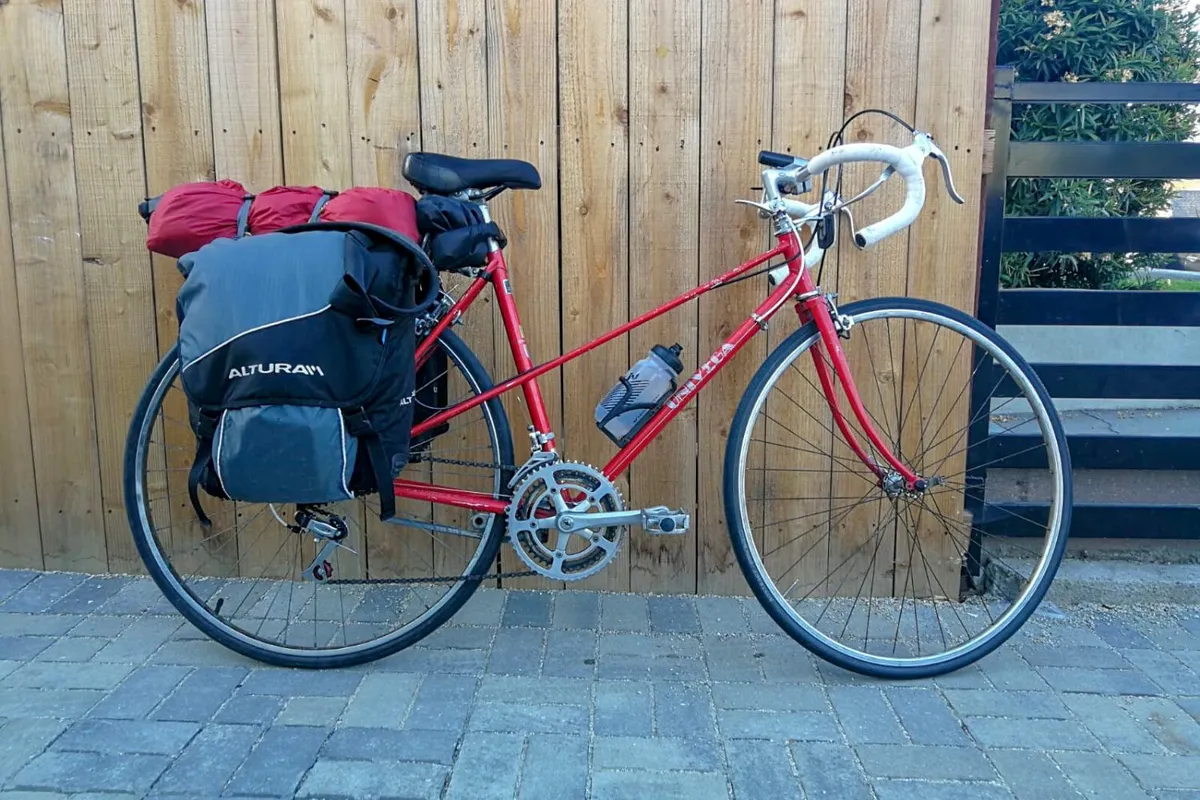
If you don’t want to subject your ‘best’ bike to the indignities of winter riding, you can of course use any old clunker you have lying around, or cobble something together from parts.
The downside to this approach is there will inevitably be compromises – old road frames typically have limited tyre clearance, for instance, and many won’t accept full-length mudguards.
You’ll also likely be stuck with rim brakes, which can be perfectly adequate but, as we’ll discuss later, aren’t ideal for the purpose. On the other hand, there’s great satisfaction to be found in repurposing old things or assembling a unique parts-bin special.
If you have a top-end bike, you may choose to invest in a more affordable road bike for winter riding.
The non-conformist: a fixed gear

Legend holds it that, in days of yore, road cyclists would flip their rear wheels around and fit a fixed gear sprocket for the winter, citing various probably mythical advantages.
Despite our scepticism, we’re big fans of fixies here at BikeRadar and there are valid reasons for choosing to ride one. They’re ultra low-maintenance compared to geared bikes and consumable drivetrain parts (chains, cogs, chainrings) are comparatively affordable.
They’re also loads of fun, but most of us wouldn’t choose to ride one full-time because having just one gear does have drawbacks, and of course it deprives you of the pleasure of freewheeling.
If the simplicity of a fixed-gear bike appeals but you don’t want to pedal ceaselessly, a singlespeed with a freewheel is also an option, one that offers similar advantages from a maintenance perspective.
But I can’t afford/don’t have space for another bike
Plenty of us ride our one and only road bike through the winter, and that’s a valid approach too, particularly if you can easily fit mudguards (more on these below).
If you’re fond of your bike, the challenge will be protecting it from the onslaught of muck and salt that winter brings. That means staying on top of cleaning and lubrication.
It’s also worth considering if there are specific components you might want to change…
Key components and accessories for winter bikes
Mudguards / fenders
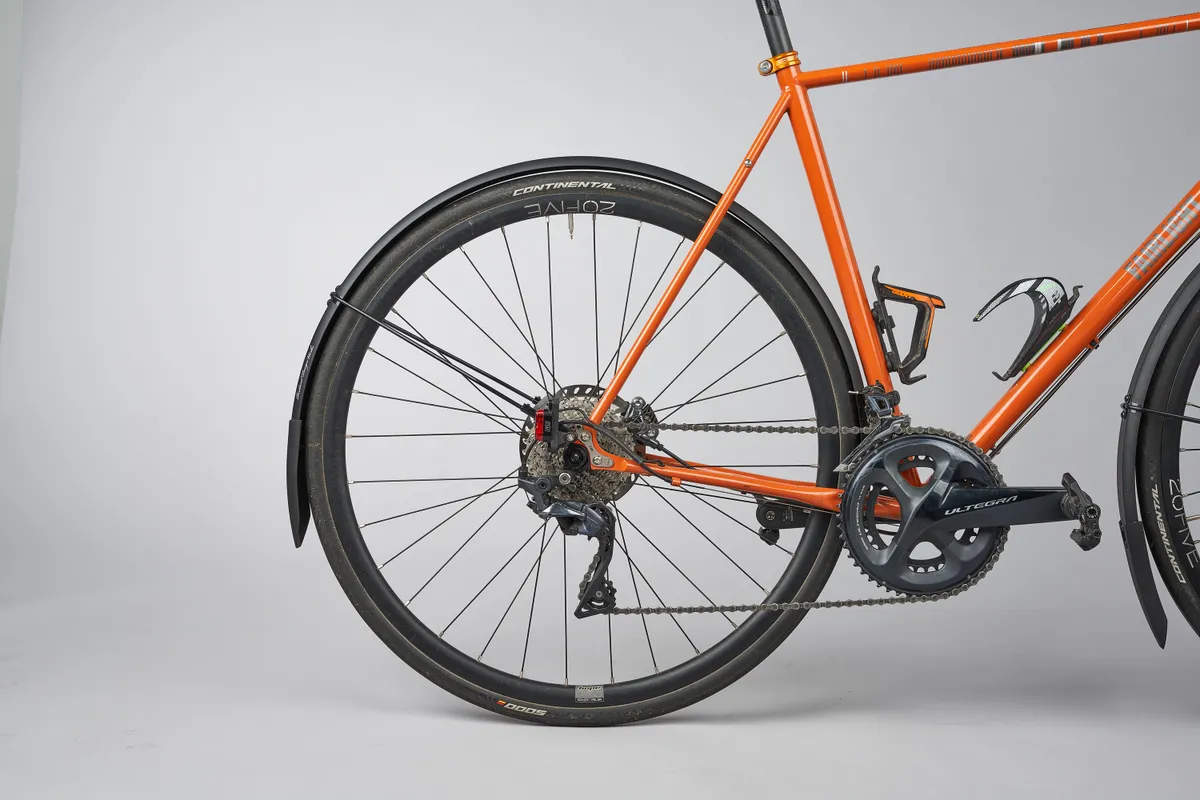
In many parts of the world, the roads don’t really dry out for long stretches in the winter, and that means there’s a continuous spray of moisture coming off your tyres even when it’s not raining.
As a result, mudguards (or fenders for North Americans) are an essential for winter riding. Full-length mudguards with mud-flaps front and rear are the ideal because these will reduce spray to a minimum, both for you and anyone riding behind you, and also help protect your bike’s components.
For a frame to accept standard full-length mudguards, it needs to have mounting bosses or eyelets to bolt on to, and sufficient clearances that the 'guards won’t catch on the tyres, get in the way of the brakes (on rim brake bikes), or cause toe-overlap issues.
Most rear mudguards require one boss at each dropout (or on the seatstays), one at the front of the chainstays, and a seatstay bridge of some sort to anchor the top of the 'guard (this will also be a brake mount on rim brake bikes).
Front mudguards need a mount at each fork dropout (or part-way up each fork leg), and either a brake bolt or a dedicated mount at the fork crown to attach to.
If your bike has clearances but no mounts, it's possible to get creative with P-clips or aftermarket accessories such as Axiom's Axle Runners.
If your bike won’t accept full-length mudguards full-stop, there are various alternatives, with long clip-ons being the next best thing. Head to our mudguards buyer's guide for more.
Drivetrain

Winter is hard on components, and so there’s a good case to be made for running cheaper kit that you won’t mind wearing out relatively quickly.
That might mean opting for a more affordable groupset such as Shimano Sora, Tiagra or 105, SRAM Apex or Rival, or Campagnolo Centaur (while it's still available).
Even if you choose higher-end components, consider whether you need the wear items to be groupset-matching. For example, if you have Shimano Ultegra R8000, there’s nothing to stop you fitting a cheaper 105 R7000 cassette and chain – both are 11-speed.
You might also choose to go with third-party parts to save money, such as a chain from KMC.
Brakes
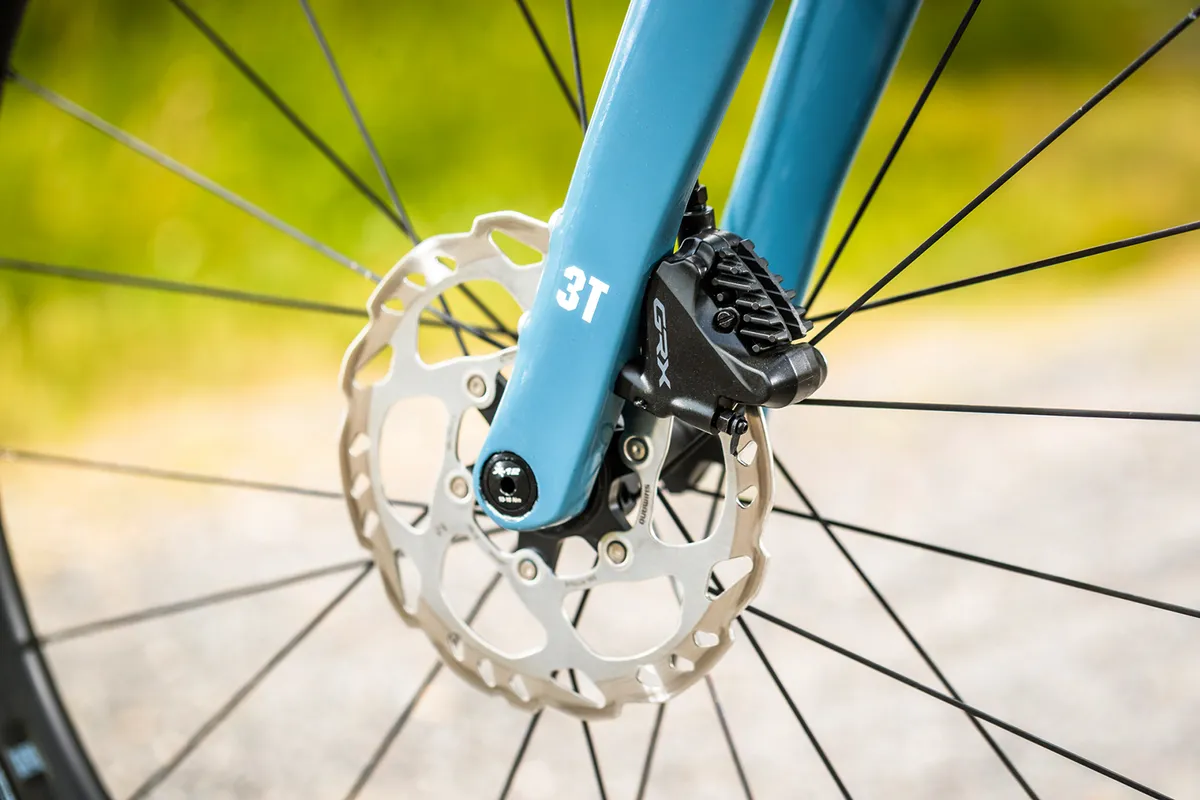
There’s no question that disc brakes are the better overall choice for winter riding, although that does come with some caveats.
Disc brakes typically go hand-in-hand with larger tyre clearances, they offer consistent performance whatever the weather, and they’re easy to operate safely even if your hands get cold.
Disc brakes also have the advantage that they don’t chew through rims – traditional rim brakes wear rims out rapidly when you throw abrasive filth into the mix.
If there’s a downside to discs (aside from extra weight and up-front cost), it’s that they can be noisy and irritating at times, and also liable to suffer pad contamination.
In wet, gritty conditions you may experience continuous low-level noise as muck finds its way between the rotors and pads, and some brakes are also prone to howling when wet.
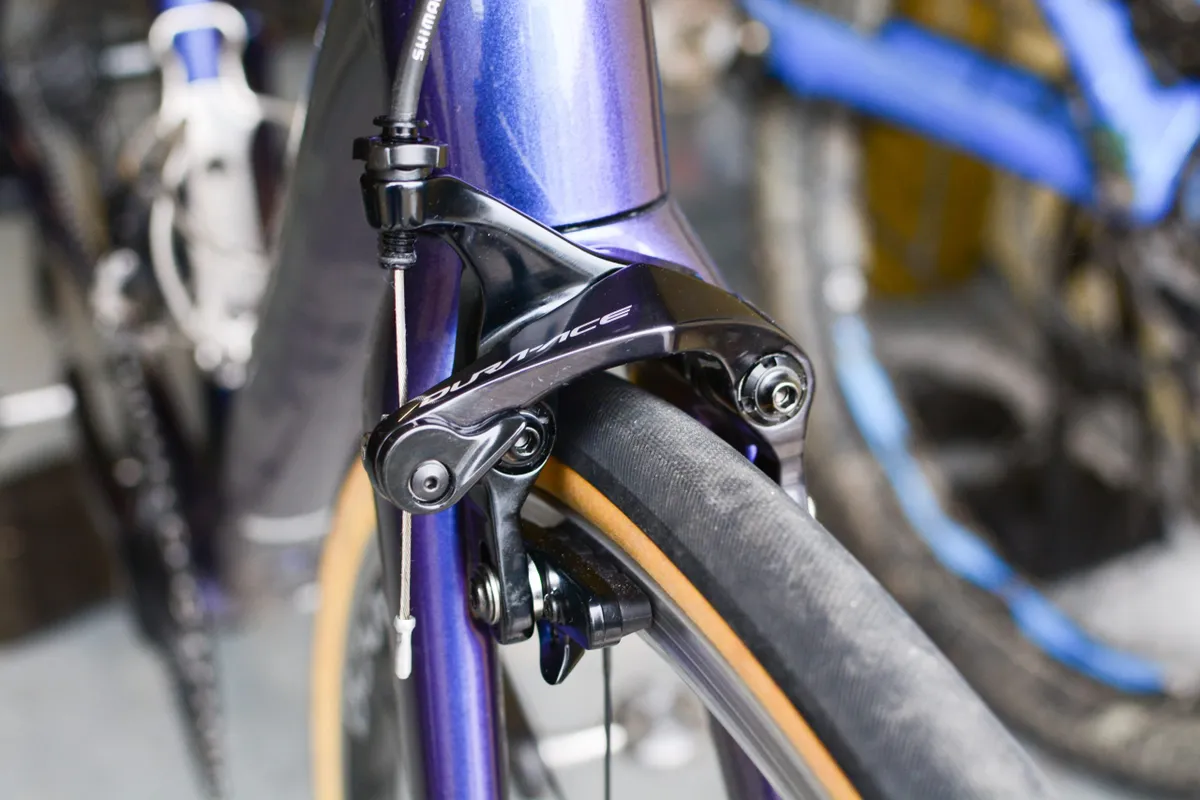
Most annoyingly, disc brake pads can become contaminated by oily substances from the road surface, rendering them far less effective (if not useless).
If this happens, the best cure is to clean your rotors thoroughly with brake cleaner and fit new pads, although some riders advocate baking the pads in the oven (or on the hob) to burn off contaminants. This isn’t a practice any manufacturer would endorse and BikeRadar staffers have experienced mixed results, so proceed with caution.
Nevertheless, if you’re starting from scratch, discs are unquestionably the preferred option for winter riding, and hydraulic discs in particular are ideal because, unlike their mechanical counterparts, they don’t need frequent adjustment to account for pad wear.
Wheels
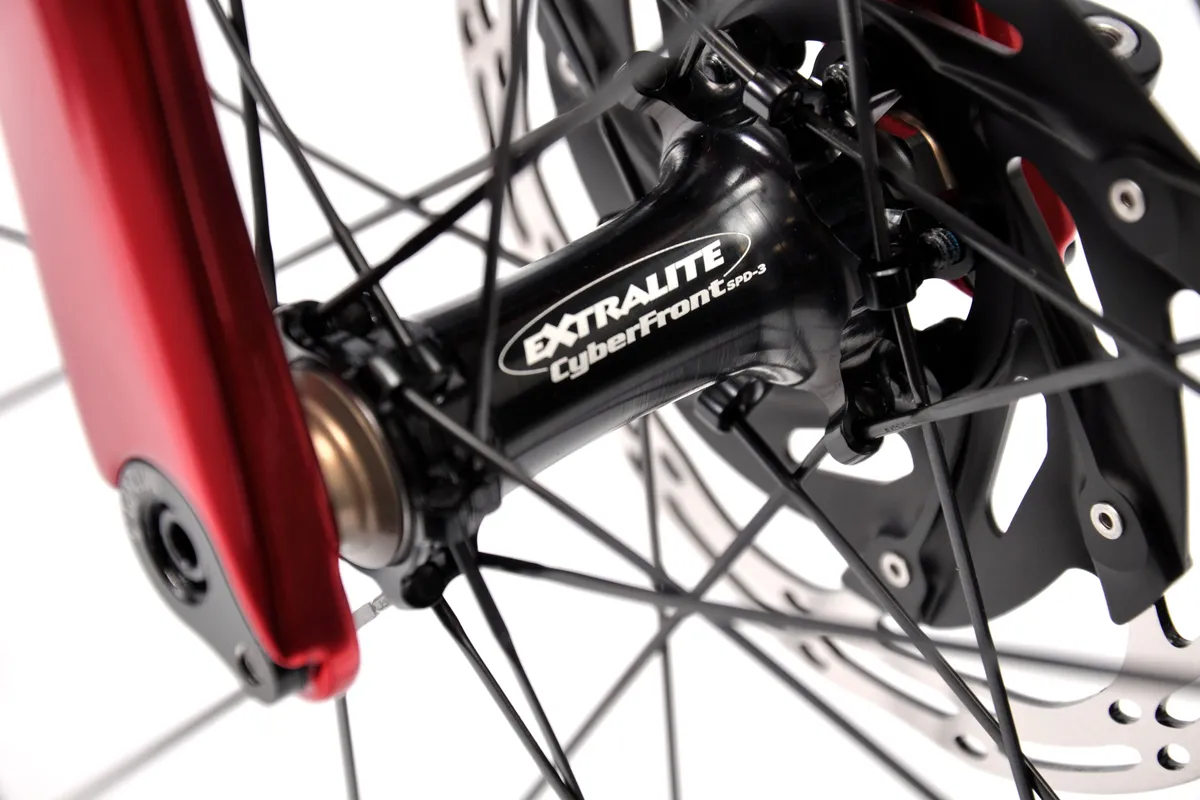
You can ride any wheelset in the winter, but some will take the abuse better than others.
With rim brakes, accelerated rim wear is an issue in the winter and so you may not want to be riding your expensive Sunday best wheels.
The effectiveness of rim brakes also suffers dramatically in wet conditions. It’s not too bad on aluminium rims, but even the best carbon braking surfaces are typically less effective than discs in rainy conditions.
There are other reasons not to use more performance-oriented wheels.
Racy wheelsets often save weight by using hubs with small, minimally sealed bearings. These will wear out quickly if water and grit find their way inside, and then you’ll need to buy new bearings and potentially pay someone to fit them.
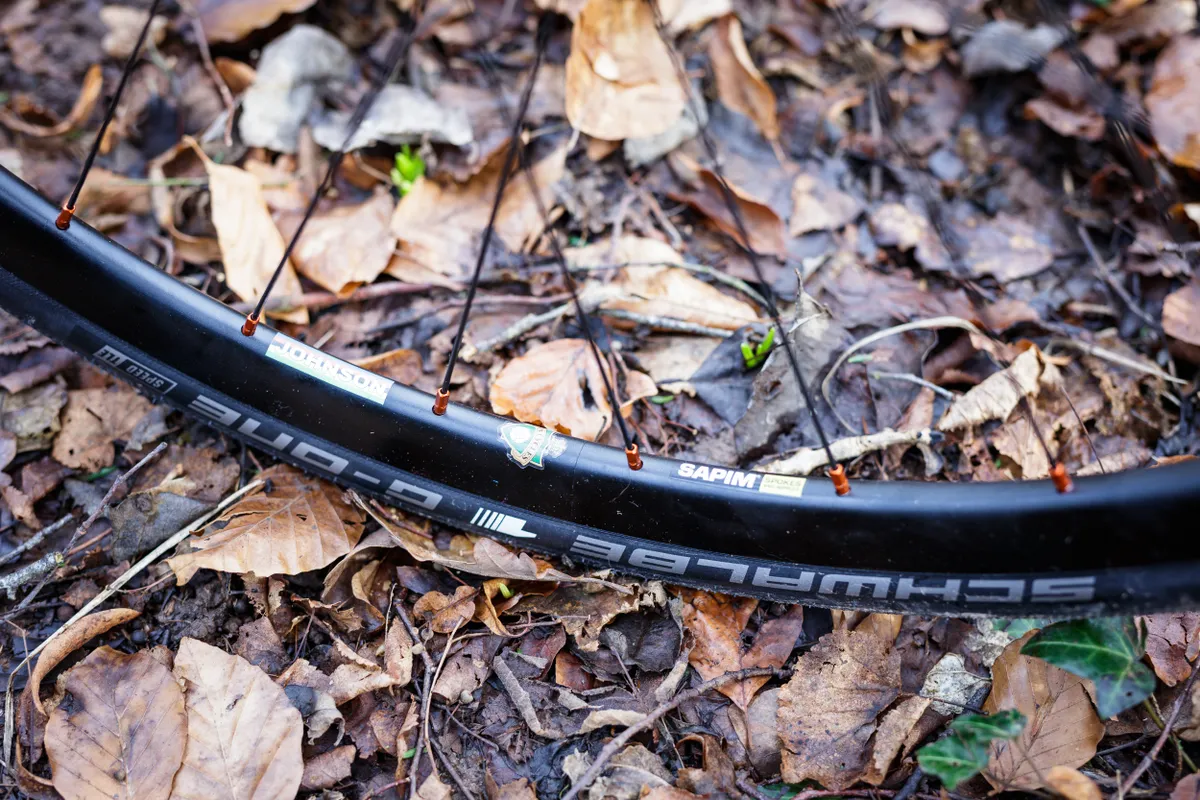
Lightweight wheels also frequently feature aluminium spoke nipples, which are more susceptible to corrosion. Given the option, brass nipples are the better choice for winter.
If you’ve got disc brakes, rim wear isn’t a particular issue, but much of the above still applies.
If you’re shopping for winter wheels, now might be the time to consider if you want to try road tubeless, which brings us on to...
Tyres
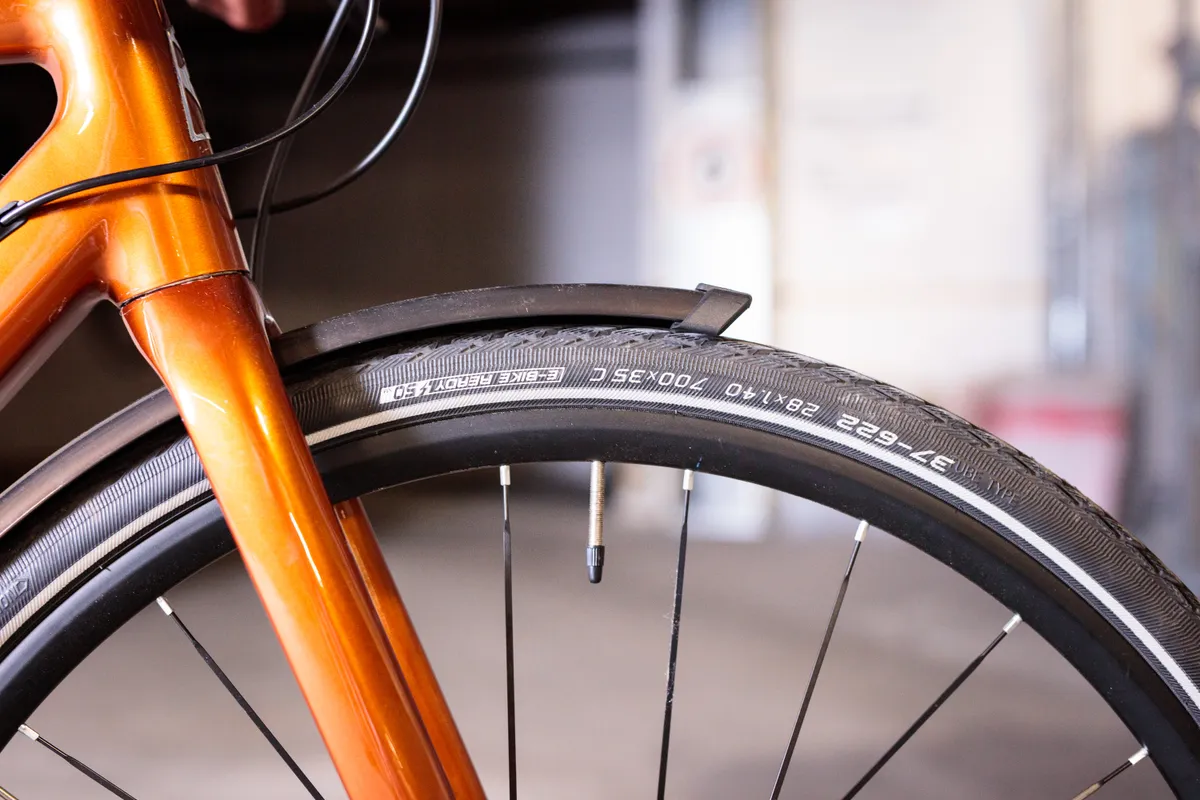
With more debris on the roads, punctures are more of a problem in the winter, and also more of a pain – no one wants to be wrestling with tyres when they’ve got stiff, cold hands or it’s raining.
That means it’s a good idea to choose more puncture-resistant tyres for winter riding – head to our winter tyres guide for some options.
If you’re shopping for new rubber, this might be the moment to consider trying something new. Would you, for example, enjoy the comfort benefit of fitting slightly larger tyres? (Check you have the necessary clearances before committing).
If your wheels are suitable, it’s well worth considering road tubeless for winter riding because the risk of punctures is reduced by the sealant, and you can run lower pressures for added grip on greasy roads.
Lights

Lights are an absolute essential in the winter, even if you’re technically riding in daylight, when the sun will be low in the sky and overall light levels will be reduced.
When searching for the best bike lights, your choices will depend on budget and specifics, such as whether you need lights solely to be seen, or also to see with (if you’re riding on unlit roads in the dark).
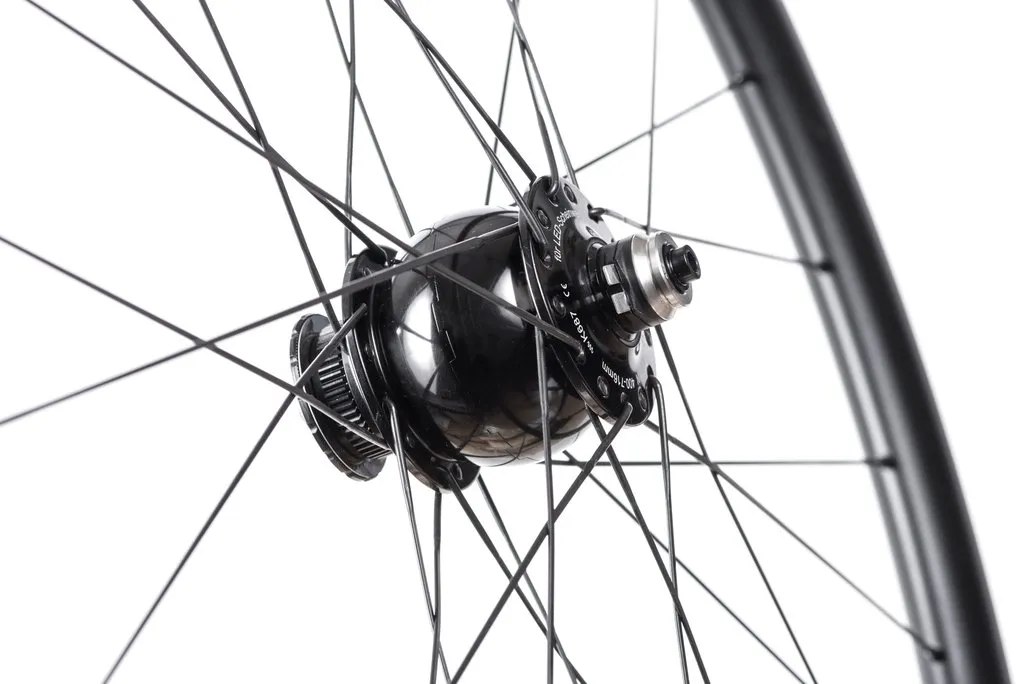
The Rolls-Royce option for a dedicated winter bike is permanently fixed lights powered by a dynamo. These give you the advantage of never being without a light as a result of flat batteries.
The downside is cost and, in the case of a dyno hub, the need for a specially built wheel.
In any case, it’s always best to have some redundancy in your lights – we’d advise running at least two fronts and two rears so you have a backup for each in case one dies unexpectedly.
Spares and other accessories

In cold weather, getting stranded by a mechanical failure comes with more serious consequences and so we’d recommend taking a more belt-and-braces approach to spares.
You want to be in a position where punctures won’t leave you high and dry, so it’s worth carrying a couple of inner tubes and/or a tyre repair kit if you’re running tubeless.
Mini pumps can make fixing punctures hard work, so some riders opt for something a little bigger (a frame pump or a longer ‘mini’ pump) and mount it to the frame.
A multi-tool with a chain tool on it (plus a quick link for rejoining) is a good idea too, as is extra clothing for unanticipated changes in the weather.
All this means it’s worth thinking about on-bike storage when you’re speccing a winter bike. Do you want mounts for a bento box top tube bag? Or rack bosses? Will you be running a bar bag (for maximum trendy points)?

Specialized’s SWAT (Storage, Water, Air, Tools) system deserves a mention here – bikes such as the Diverge offer generous in-frame storage, so you don’t necessarily need lots of luggage.
It’s not (just) about the bike
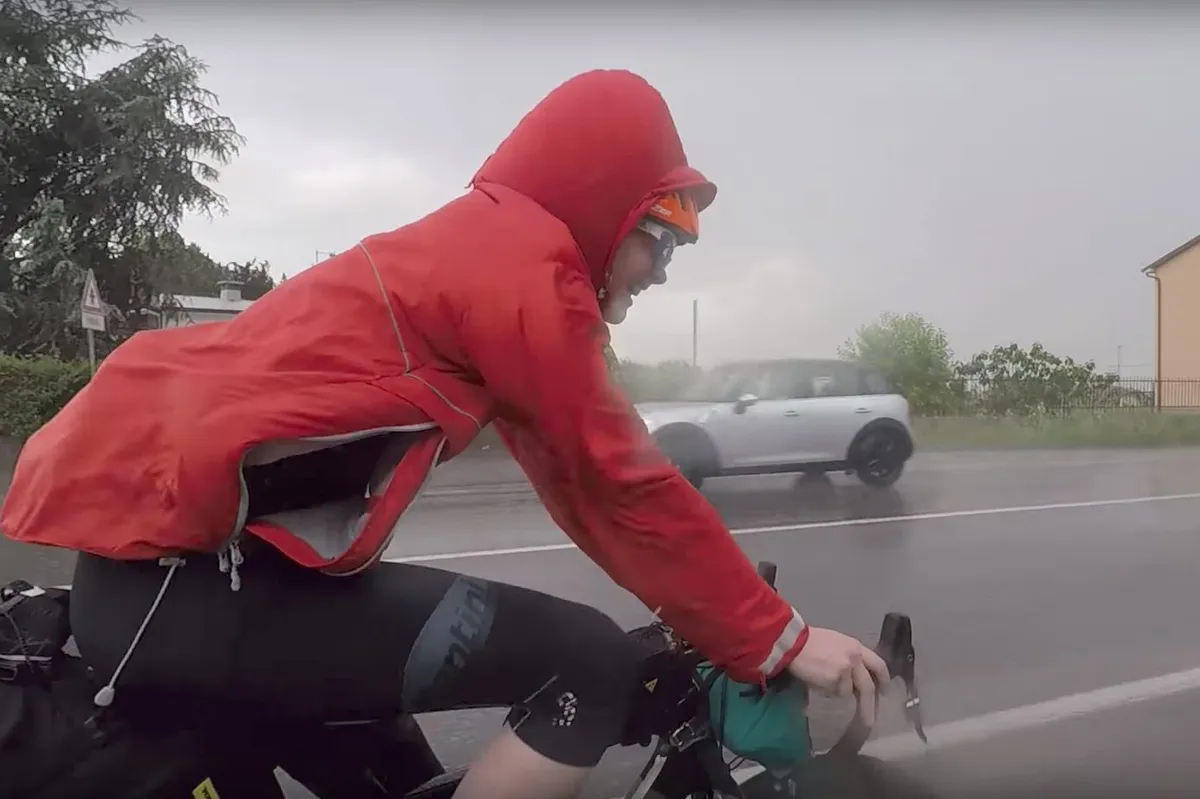
Enjoying your winter riding isn’t just about the bike, it’s about mindset too, and also having the right kit.
We’ve got useful inspiration to get you going, and some great advice on general winter riding and riding in the rain.
If you’re taking your training seriously, have a read of elite cyclist Tom Bell’s advice and watch Jack Luke and Joe Norledge talk through some of their favourite winter kit.
Can’t face any of it? Maybe indoor training is for you. Our guide to the best smart trainers is here.
